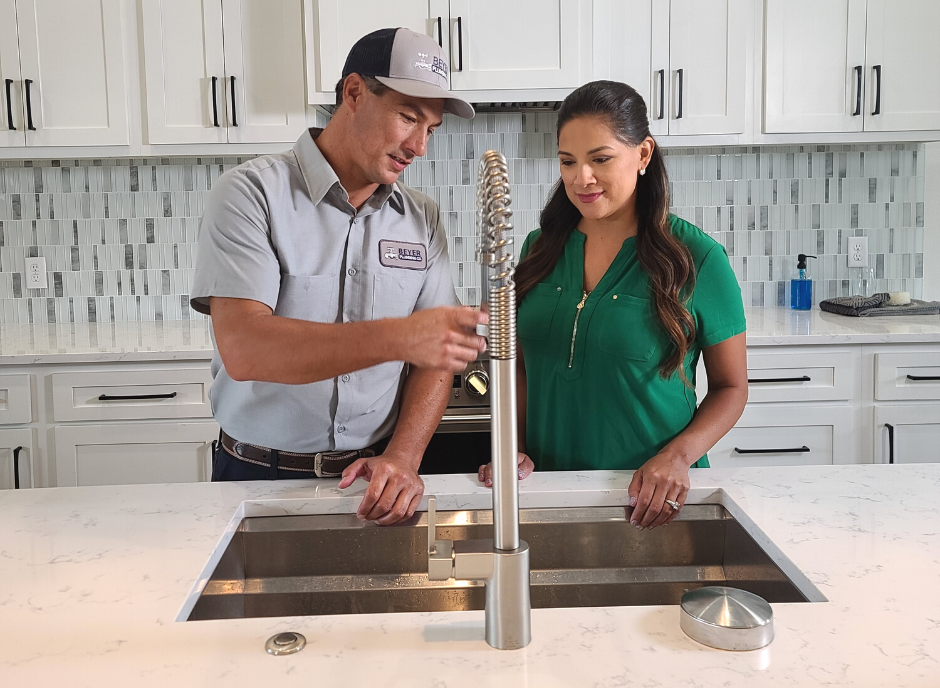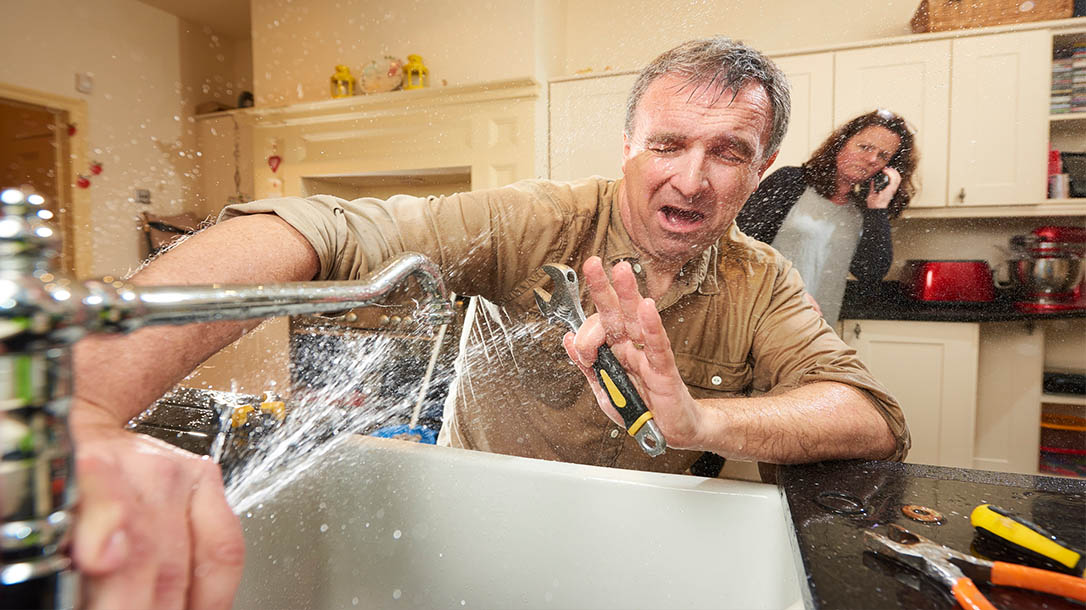What It's Required to Fix a Leaking Faucet
What It's Required to Fix a Leaking Faucet
Blog Article
What are your concepts on Should I Repair or Replace a Leaky Faucet??

Leaking faucets might appear like a small trouble, however their effect surpasses just the nuisance of the sound. From drainage to incurring unnecessary monetary expenses and health and wellness dangers, overlooking a trickling faucet can lead to various consequences. In this article, we'll delve into why it's critical to address this typical house problem immediately and successfully.
Wastefulness of Water
Ecological Effect
Leaking faucets add significantly to water wastage. According to the Environmental Protection Agency (EPA), a single faucet trickling at one drip per secondly can lose more than 3,000 gallons of water annually. This not just strains water sources yet also impacts environments and wildlife dependent on them.
Step-by-Step Overview to Taking Care Of a Dripping Tap
Tools Called for
Before trying to take care of a leaking faucet, gather the required devices, including a flexible wrench, screwdrivers, replacement parts (such as washing machines or cartridges), and plumber's tape.
Typical Tap Issues and Their Solutions
Recognize the sort of faucet and the particular issue causing the drip. Common issues consist of damaged washing machines, corroded shutoff seats, or damaged O-rings. Refer to supplier guidelines or on the internet tutorials for detailed assistance on repairs.
Financial Expenses
Boosted Water Costs
Beyond the environmental effect, dripping taps can pump up water bills considerably. The collected wastefulness over time translates right into higher utility expenditures, which could have been stayed clear of with timely repair services.
Possible Residential Or Commercial Property Damage
Furthermore, long term dripping can lead to damage to fixtures and surfaces surrounding the tap. Water accumulation can trigger discoloration, rust, and even architectural problems if left neglected, resulting in added repair work expenses.
Health and wellness Worries
Mold And Mildew and Mildew Development
The constant visibility of moisture from a leaking tap produces a perfect environment for mold and mold development. These fungi not only endanger interior air high quality but additionally pose health and wellness dangers, particularly for people with respiratory conditions or allergic reactions.
Waterborne Diseases
Stagnant water in dripping faucets can become a breeding place for germs and other virus, increasing the threat of waterborne diseases. Pollutants such as Legionella microorganisms grow in stagnant water, possibly bring about severe ailments when ingested or inhaled.
Do it yourself vs. Professional Repair service
Benefits and drawbacks of Do It Yourself Repair
While some may try to fix a dripping faucet themselves, DIY repairs come with their very own collection of obstacles. Without appropriate expertise and devices, DIY efforts can aggravate the concern or bring about insufficient repair services, lengthening the issue.
Benefits of Employing a Specialist Plumber
Employing a specialist plumber makes certain that the underlying cause of the dripping faucet is attended to efficiently. Plumbings have the know-how and devices to identify and fix faucet problems effectively, conserving time and lessening the danger of further damages.
Ecological Duty
Private Payment to Preservation
Taking responsibility for fixing trickling faucets lines up with broader initiatives towards water conservation and ecological sustainability. Every individual's actions collectively make a substantial effect on maintaining valuable resources.
Sustainable Living Practices
By prioritizing timely repair services and adopting water-saving behaviors, individuals contribute to sustainable living techniques that profit both present and future generations.
Safety nets
Normal Maintenance Tips
To avoid dripping taps, carry out routine maintenance such as cleansing aerators, evaluating for leaks, and replacing damaged components without delay. Additionally, take into consideration mounting water-saving devices or upgrading to much more effective components.
Relevance of Prompt Fixes
Addressing leaking taps as quickly as they're observed avoids further water wastefulness and possible damages, eventually saving both water and money in the future.
Influence On Building Value
Assumption of Well-Maintained Property
Keeping a residential or commercial property in good condition, including dealing with maintenance issues like dripping faucets, boosts its viewed value and worth amongst potential buyers or tenants.
Impact on Resale Value
Qualities with properly maintained plumbing fixtures, including faucets, command greater resale values in the real estate market. Dealing with leaking taps can add to a positive impression throughout residential or commercial property assessments and settlements.
Conclusion
Resolving a dripping tap goes beyond plain comfort; it's a crucial step toward preserving water, decreasing monetary costs, and protecting health and home. Whether through do it yourself fixings or professional assistance, taking action to take care of dripping faucets is a tiny yet impactful way to advertise liable stewardship of sources and add to a much healthier, much more lasting future.
How to Fix a Dripping or Leaky Faucet
A leaking faucet is one of the most common problems that homeowners encounter, but it being commonplace doesn’t make it any less annoying. The constant drip drip drip of a leaking bathtub faucet, showerhead, or sink tap can disturb your home’s serenity. Left neglected, a dripping faucet can also result in higher water bills and discoloration or mold growth in your sink or plumbing fixtures.
Fortunately, you don’t have to be a trained plumber to know how to stop a dripping faucet. With some basic tools, replacement parts, and a little patience, leaky faucet repair is a breeze. In this article, we’ll explain what causes dripping faucets and how you can fix them.
What Causes a Leaking Faucet?
Kitchen and bathroom faucets come in all manner of designs, but most involve some combination of valves, O-rings, seals, and washers. The O-ring is usually the weakest link, but any one of these pieces can wear down over time. Heat, moisture, temperature fluctuations, minerals, mold, and movement can contribute to warping and corrosion, breaking the watertight seal. This just comes with the territory of being a homeowner. Everything is always subject to wear and tear, and some component parts of your appliances and fixtures need to be replaced on occasion. At least replacement O-rings are cheap!
More rarely, dripping faucets can be a symptom of excessively high water pressure. Were this the case in your home, you would probably notice that the leak is not isolated to one faucet. Water pressure issues are harder to resolve on your own. We recommend contacting a professional plumber if you suspect your water pressure is too high.
How to Fix a Dripping Faucet
Pipe wrench or monkey wrench Allen wrench set Screwdrivers Old towel or rag Shut off the water.
Before you do anything, you need to turn off the water to keep from drenching your kitchen or bathroom. You should find a valve under the sink and against the wall. Once you’ve turned this valve, try turning the faucet on to confirm that the water source has been cut off.
If you can’t locate your local valve for the faucet you’re working on, you can always shut off the water to the house at the main valve. Of course, this will prohibit anyone from using the sinks, showers, or toilets while you’re working on the faucet that’s giving you trouble.
Plug or block the drain.
You’ll be disassembling the faucet and removing some small bits of hardware. Plug the drain with a stopper or rag to avoid the possibility of a small screw falling into your P-trap.
Take apart the faucet assembly.
There are several varieties of kitchen and bathroom faucets, each with its own manner of assembly. For detailed instructions on how to disassemble your faucet, you can refer to the fixture’s manual or contact the manufacturer. If you know whether you have a ball, disc, cartridge, or compression faucet, you can find detailed schematics online.
In general, you need to begin by removing the faucet handles. You might notice a small screw that you’ll need to remove with a screwdriver or Allen wrench. If you don’t see any visible securing hardware, it’s likely hidden under a decorative cap that can be unscrewed or popped off with flathead screwdriver.
Remove each piece methodically, consulting a schematic when necessary. Take notes or arrange the pieces in such a way to make it easier to correctly reassemble the faucet later.
Remove the cartridge.
Once you’ve removed the handles and securing hardware, you should be able to remove the valve cartridge or stem. Some cartridges will slide right out. Other faucet models will require you to loosen a nut with a pipe wrench before you can remove the valve stem.
Examine the exposed hardware.
With the cartridge or stem removed, inspect the component parts. Check the rubber O-rings for wear and tear. Also examine the seat washer for corrosion or other damage. These pieces are usually the responsible parties for a dripping faucet, but it’s worth inspecting the other component parts while you have the faucet disassembled.
Find replacement parts.
Once you’ve identified which faucet component has failed, find an identical replacement. Your local hardware store should have O-rings, seat washers, and other standard components in stock. If you have a luxury or uncommon faucet, you may have to contact the manufacturer for a replacement part.
It’s a good idea to take your old parts with you to the hardware store so you can compare them with the store’s inventory and be sure you’re purchasing the correct replacement.
Reassemble the faucet.
With your new parts in hand, reconstruct the faucet and handles. Don’t be tempted to overtighten screws or nuts. You might think this could create a better seal, but it can instead damage or bend a delicate part of the assembly and create a new problem for you.
Turn on the water and test the faucet.
The only thing left to do is test your work. Unplug the sink, turn the water back on, and try the faucet. Congratulate yourself on a job well done!
https://www.libertyhomeguard.com/how-to-fix-a-dripping-or-leaky-faucet/

As a passionate person who reads on Water Dripping from Faucet: Why and How to Fix, I thought sharing that editorial was important. Loved our review? Please quickly share it. Help others check it out. Kudos for your time. Don't forget to pay a visit to our site back soon.
Report this page